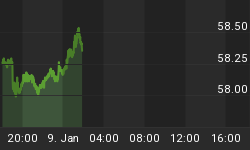Trump may backtrack—it’s happened before, but as of today, a major trade war with China appears imminent, with reports coming out of Washington that Trump is planning to slap $60 billion a year in tariffs on China as punishment for stealing and extorting American trade secrets.
Trump’s $60-billin annual tariff package is double what his senior aides had earlier proposed, and according to sources cited by the Washington Post, the plan is expected to be unveiled by Friday.
Though vague and short on details, reports say that the tariffs could target over 100 products that were specifically developed by the Chinese using stolen trade secrets and other intellectual property infringements, or by forcing companies to hand them over in return for market access in China.
The question now is whether Trump’s threat is real, or more hot air.
Trump backed down last week over 25-percent steel and 10-percent aluminum tariffs, exempting Canada and Mexico—as long as they agreed to play nice over NAFTA.
And anyone in the White House who disagrees has probably already gone out with the recent purge as the president is walking down a unilateral path that is determined to resist opposition.
According to the Washington Post, several administration officials said Trump was likely to go through with the plan because of his heavy criticism of U.S.-China relations during his campaign, and the need to be perceived as making good on promises to equalize the trade balance with Beijing.
The U.S. in on a clear protectionist path now, and the general sentiment among the protectionist camp is that China is unwilling to make changes to its own trade policies and less aggressive actions by the U.S. have failed in the past.
Related: Will April Be A Turning Point For Precious Metals?
If imposed, this tariff package would be the biggest economic action taken by any U.S. president against China, WP noted.
While there is overall agreement that China is abusing global trade, there is wide disagreement over how to handle that, and mounting fears of an all-out trade war that may backfire on the U.S. economy.
There is also confusion over how the tariffs would work, and how specific Chinese companies would be targeted when the supply chain is multinational and globally pervasive.
What would happen, for instance, to Apple stock when prices of consumer electronics are raised, economist Nicholas Lardy, senior fellow at the Peterson Institute for International Economics, asked, speaking to the WP.
"So much of what we import from China is produced by multinational companies," Lardy said. "Thirty percent are consumer electronics. I'm sure the president doesn't want to raise the prices of those and send Apple's stock into the toilet."
But others will argue that tariffs wouldn’t force Apple to make iPhones in the U.S. or make them prohibitively expensive. While Apple’s iPhones are largely assembled in China by Foxconn, tariffs would send to another cheap venue—like Vietnam.
Retail giants, however, are sounding the alarm bells. Related: Bitcoin Bounces Back Ahead Of G20 Meeting
In a letter signed by 25 U.S. retail giants—including Walmart, Target and Costco—the Retail Industry Association (RILA) has asked Trump to back down.
"This is not American industries crying wolf," RILA president Sandy Kennedy said in a statement. "Higher tariffs will mean higher costs to businesses and in turn higher prices for American families."
"We must do right by American families, and make sure they are not the ones who will pay for China's harmful technology practices,” she added.
This is how a trade war starts—and is lost.
China will have a much easier time with retaliatory tariffs, according to Lardy, and soybeans—one of the top two U.S. exports to China--will be the easiest.
According to a Reuters report earlier this month, Chinese officials have already threatened U.S. soybean exports, call them a prime target to retaliation for steel and aluminum tariffs.
Some economists also say that punitive tariffs on China won’t change the big picture, or erase the U.S. trade deficit. Instead, it will just shift the trade elsewhere rather than creating more U.S. jobs. The beneficiaries would be Bangladesh or Vietnam, or some other low-cost producer, according to Lardy.
By Jan Bauer for Safehaven.com
More Top Reads From Safehaven.com:

















